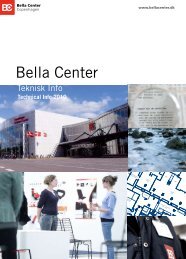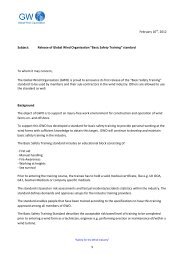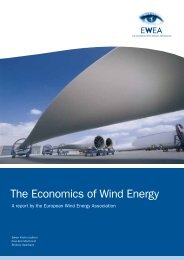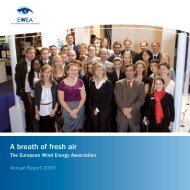Offshore Electricity Infrastructure in Europe - European Wind Energy ...
Offshore Electricity Infrastructure in Europe - European Wind Energy ...
Offshore Electricity Infrastructure in Europe - European Wind Energy ...
Create successful ePaper yourself
Turn your PDF publications into a flip-book with our unique Google optimized e-Paper software.
esults<br />
farm connections, the reduction <strong>in</strong> system cost is only<br />
about 40% (rang<strong>in</strong>g from 5-74%) smaller on average,<br />
compared to the direct <strong>in</strong>terconnector (Figure 4.31).<br />
Figure 4.33 shows a comparison of the net benefit between<br />
the Direct Design and the Split Design 39 , and<br />
the benefit per <strong>in</strong>vested euro (benefit-to-CAPEX ratio).<br />
For the six split w<strong>in</strong>d farm connections, the benefit per<br />
<strong>in</strong>vested euro is 1.7 times higher than for the mirrored<br />
direct <strong>in</strong>terconnectors of the Direct Design. The net<br />
benefit per <strong>in</strong>vested euro CAPEX is on average even<br />
2.6 times higher for the Split Design, which means<br />
that each euro is spent 2.6 times more effectively.<br />
Case-by-case: comparison of absolute<br />
benefits<br />
Both methodologies build on step-wise modular grid<br />
expansion. In each step new <strong>in</strong>terconnection capacity<br />
is added to the system and the <strong>in</strong>frastructure<br />
<strong>in</strong>tegrated <strong>in</strong> each design differs <strong>in</strong> size and costs.<br />
Therefore it is difficult to make an absolute comparison<br />
of the cost-efficiency. The graph <strong>in</strong> Figure 4.34<br />
however gives some more <strong>in</strong>sight <strong>in</strong> the efficiency of<br />
both design approaches. It shows the system cost reductions<br />
mapped aga<strong>in</strong>st the step-wise <strong>in</strong>frastructure<br />
<strong>in</strong>vestments.<br />
FIGURE 4.35: cUMUlATIvE NET bENEFIT cOMPARISON [€ bN)<br />
Cumulative net<br />
bene�ts (€bn)<br />
16<br />
14<br />
12<br />
10<br />
8<br />
6<br />
4<br />
2<br />
0<br />
12,74<br />
280%<br />
Direct design Split design<br />
Net bene�t over the lifetime<br />
FIGURE 4.34: AbSOlUTE cOMPARISON OF dIREcT ANd SPlIT<br />
OFFShORE GRId dESIGNS<br />
Annual system<br />
costs (€bn)<br />
Often for a similar <strong>in</strong>vestment cost, the system cost<br />
reduction <strong>in</strong> the Split Design is higher than <strong>in</strong> the<br />
Direct Design. As an example, for a CAPEX of €4 bn,<br />
the Split methodology leads to an extra 9% of system<br />
cost reduction (=€944 m across 25 years) compared<br />
to the Direct methodology. Basically only for the cumulative<br />
<strong>in</strong>vestment of about €1.5 bn the Direct Design<br />
is more effective.<br />
Bene�t-to-CAPEX<br />
ratio<br />
350%<br />
39 When compar<strong>in</strong>g case-by-case, please note that the price difference development is chang<strong>in</strong>g differently for the Direct and Split<br />
Design as the <strong>in</strong>frastructures measures are not always the same. Thus, also the benefits of follow<strong>in</strong>g projects are <strong>in</strong>fluenced.<br />
72 <strong>Offshore</strong>Grid – F<strong>in</strong>al Report<br />
101<br />
100<br />
99<br />
98<br />
0<br />
297%<br />
9,64<br />
Bene�t capex ratio (over the life time)<br />
Direct design<br />
Split design<br />
2 4 6 8<br />
Capital cost (€bn)<br />
300%<br />
250%<br />
200%<br />
150%<br />
100%<br />
50%<br />
0%









